Creating a raised bed garden layout that gets at least six hours of sun and keeps clear paths for access sets your plants up for success. Smart raised garden design caps the bed width at four feet so every inch stays within reach. Stand tall crops like trellised cucumbers on the north edge, letting shorter herbs fill the front for airflow and shade control.
The garden layout ideas shared in this guide prevent unwanted shadows and boost yields. While companion planting plus staggered sowing are proven raised bed gardening tips that stretch harvest season.
Key Benefits of a Thoughtful Raised Bed Layout
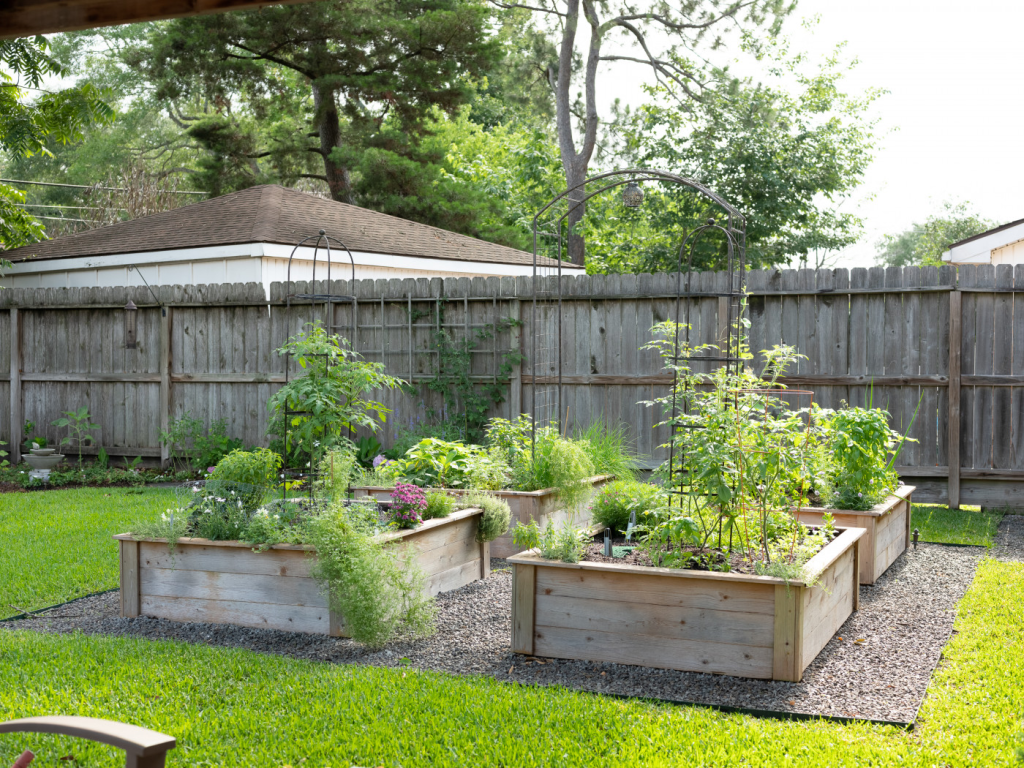
Less bending, fewer weeds, and more lettuce fit into the same square footage when the layout is dialed in. A smart design unlocks the benefits of raised beds by keeping them 3-4 feet wide so every stem sits within easy reach. Tight boards shed water fast, preventing soggy roots, while the walls stop crabgrass in its tracks.
Following garden accessibility tips also means taller sides that welcome wheelbarrows and chairs. Combine staggered rows and corner triangles for efficient garden layouts, stacking even more raised garden advantages into every inch.
Picking the Ideal Location for Your Raised Beds
Choose an ideal garden location that soaks up at least six hours of direct light. South-facing beds give veggies the intensity they crave, meeting basic garden sunlight requirements. Keep a spigot or rain barrel within a hose’s reach to cut lug time and encourage regular watering.
Author’s Note: Check out our post Planning Your Garden For Maximum Sun Exposure: Essential Tips For Thriving Plants for an in-depth look at planning your garden with the sun in mind!
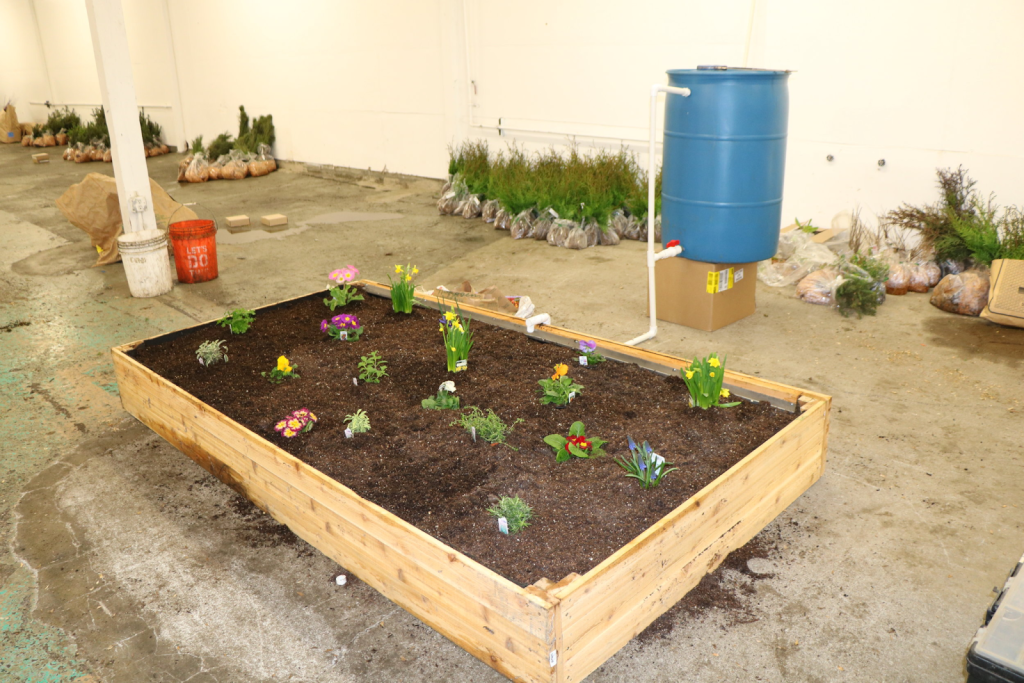
A good raised bed also sits on level ground with loose soil, away from tree roots. If clay soil puddles after rain, install gravel or a perforated pipe as part of smart drainage solutions in raised beds.
Selecting Durable and Safe Raised Bed Materials
Solid gardens begin with raised bed materials that shrug off weather and stay safe for edibles. Untreated cedar garden beds resist rot naturally and skip chemical leaching.
Powder-coated steel panels follow close behind, staying cool and rust resistant while giving beds a crisp outline. For budget or eco-friendliness, hunt for safe raised bed frames made from recycled HDPE or barn boards. Using recycled garden materials cuts waste and still looks polished.
Optimal Dimensions for Comfort and Productivity
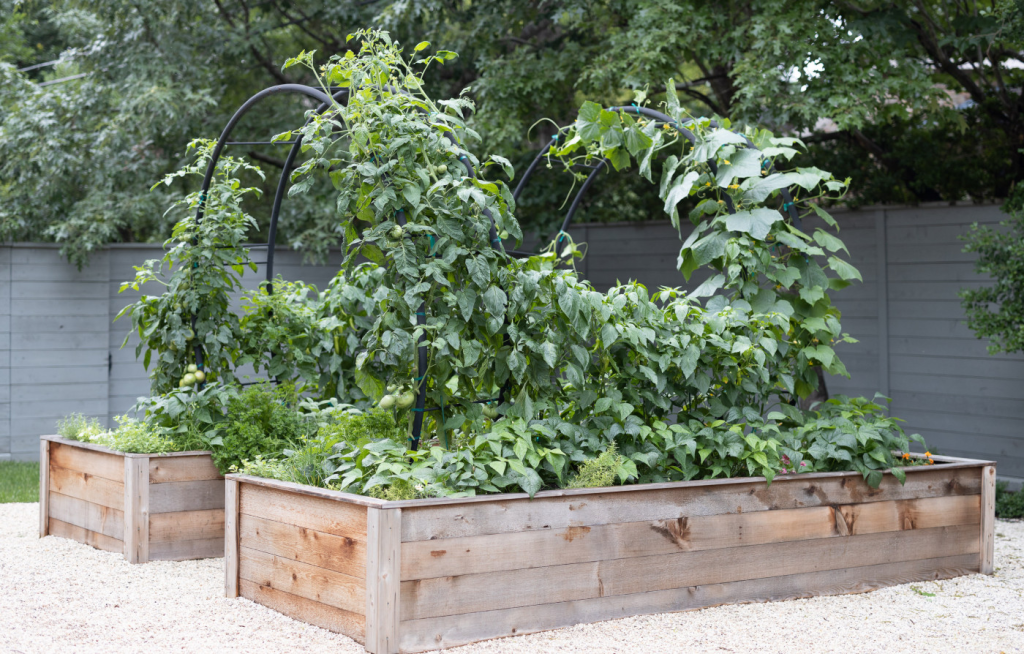
As previously mentioned, aim for raised bed dimensions of four feet wide and up to eight feet long so every corner stays within arm’s reach. Pair that footprint with garden bed depths of twelve to eighteen inches, balancing root space and soil costs while saving the back.
When extra accessibility is needed, lift walls toward twenty-four inches, but still keep the optimal raised bed size under four feet wide for easy access.
Preparing Nutrient-Rich Soil Mixes
Healthy veggies start with soil that holds moisture yet drains well. A trusted raised bed soil mix pairs equal parts screened topsoil and compost for a light, loamy base. To boost fertility, fold in worm castings or aged manure, turning the blend into nutrient-rich garden soil.

Here are some quick soil preparation tips: fluff the bed each season, top-dress with two inches of fresh compost, and keep pH near neutral. Favor natural garden soil amendments such as perlite for aeration and slow-release organic fertilizer pellets for sustained feeding.
Effective Planting Strategies for Raised Beds
Good raised beds thrive on smart planning. Think of raised bed planting strategies as arranging theater seats: tall corn and trellised tomatoes stay in the back so sun reaches shorter plants such as bush beans in front.
Stick to your specific plant’s recommended spacing to cut disease and let roots breathe. Rotate crops with quick greens between summer staples using succession planting techniques and keep harvests rolling. and don’t forget to train cucumbers and pole beans upward with sturdy trellises for extra room.
Companion Planting for Healthier Crops
Think of the raised bed as a neighborhood: tomatoes thrive when basil stands guard, its scent helps to deter hornworms.
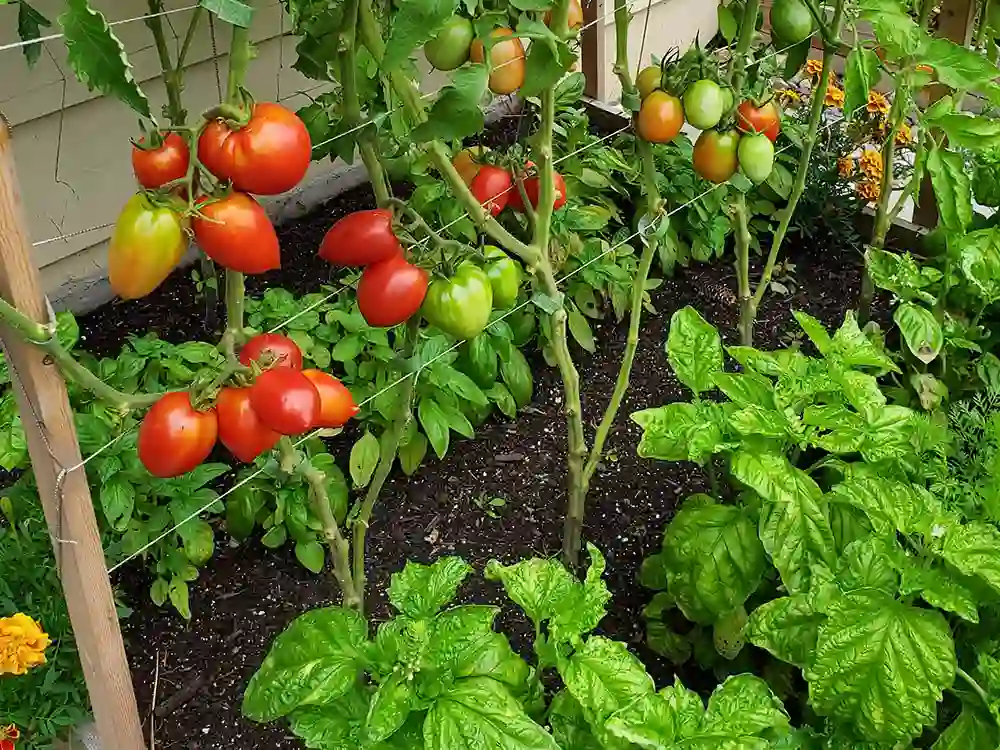
Slide onions beside carrots, and the two roots mask each other’s smell, confusing pests. Slip marigolds among peppers to lure ladybugs that clear aphids. This mini ecosystem keeps soil nutrients balanced, reduces chemical sprays, and boosts yields. The tactics in this companion planting guide lean on beneficial plant pairings for smart pest control.
Author’s Note: Check out our post How To Pair Plants For Healthy Growth: Your Ultimate Companion Planting Guide for an in-depth look at companion planting!
Efficient Irrigation Solutions for Raised Beds
Dragging a sprinkler around raised boxes gets old fast. Raised bed irrigation works best when water drips at root level, so run half-inch lines along each row and tuck them under mulch.
Try these drip irrigation tips: space emitters one hand-width apart, flush lines monthly, and install an inline filter.
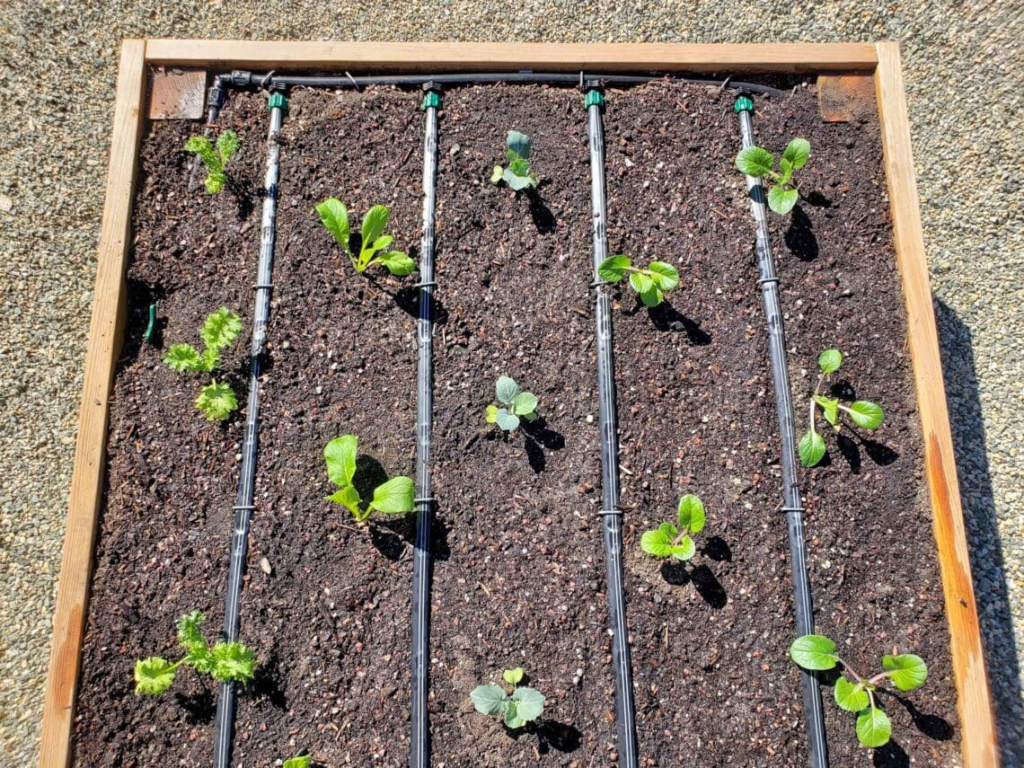
Back them up with soaker hose gardening along bed edges for slow, even soak that keeps leaves dry. Together, they deliver truly water-efficient gardening, supplying steady moisture while trimming runoff.
Seasonal Care and Maintenance Essentials
In early spring, fork compost into soil, test pH, then top with two inches of straw or leaf mold for moisture control and fewer weeds. Summer means weekly garden bed maintenance: replenish mulch, pull seedlings while tiny, and scout aphids or hornworms, knocking them off or spraying neem.
By fall, blanket beds with shredded leaves, mulching raised beds, and sow a quick cover crop. Winter’s core seasonal gardening tasks are clearing debris and trapping overwintering slugs.
Common Raised Bed Garden Layout Mistakes to Avoid
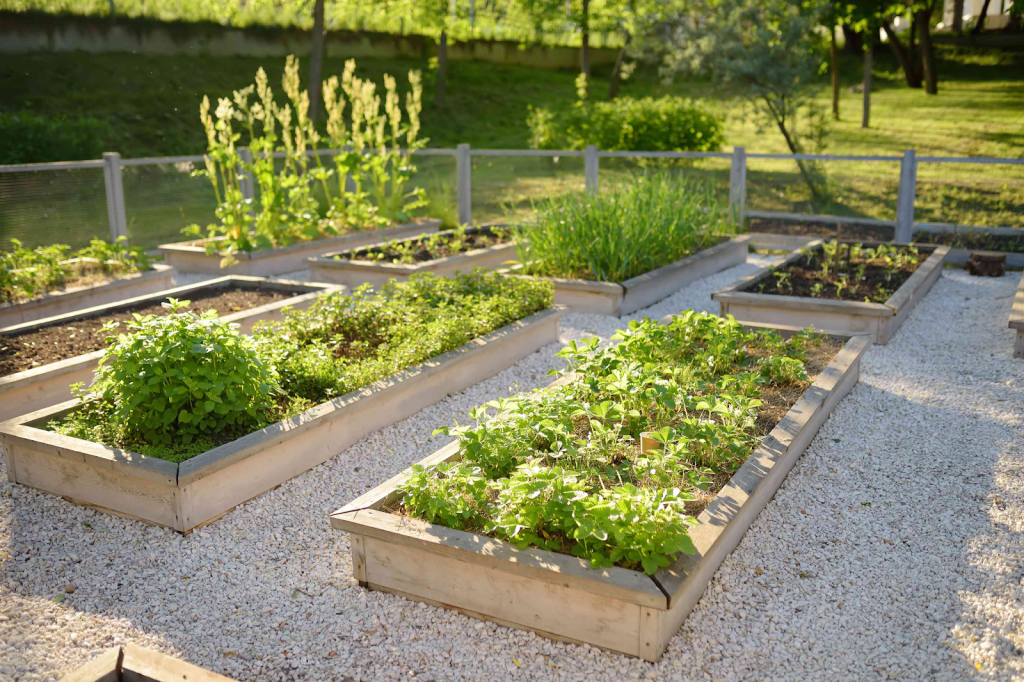
Skipping accurate bed spacing tops the list of garden layout mistakes. Overly wide frames force awkward stretches and crowd plant roots. Reaching problems multiply when raised bed garden errors like skinny footpaths leave no room for a wheelbarrow, compacting soil with every step.
Another mistake is choosing pressure-treated planks that leach chemicals. It is one of those silent garden planning pitfalls that stunt growth.
Inspiring Layout Ideas for Stunning Raised Beds
Bold shapes catch the eye and boost harvest potential. Browse inspiring raised bed designs that turn blank yards into productive art. Hexagons, triangles, and circle-within-square beds anchor striking geometric garden layouts, keeping paths tidy and crops easy to reach.
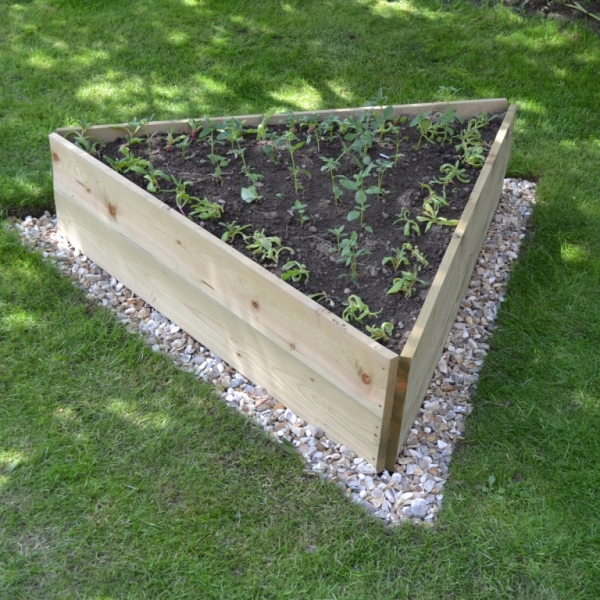
Prefer farmhouse charm? Reclaimed timber, corrugated metal, and log frames deliver timeless rustic raised bed ideas that weather beautifully. Small yard? Stack cedar boxes, add tiered planters, or run trellised arches for space-saving vertical raised garden designs.
Conclusion: Cultivate a Garden You’ll Love
Thoughtful layout choices turn planks and soil into raised bed gardening, proving that good design begins before seeds hit the dirt. Prioritize sunlight, efficient paths, and hassle-free watering to lock in gardening layout success.
Simple crop rotation charts and companion pairings bring rewarding garden ideas to life while keeping pests guessing. Keep a notebook for ongoing raised bed garden planning and celebrate every new sprout.
Sketch your dream bed, build it this weekend, and show off the first harvest in the comments below!

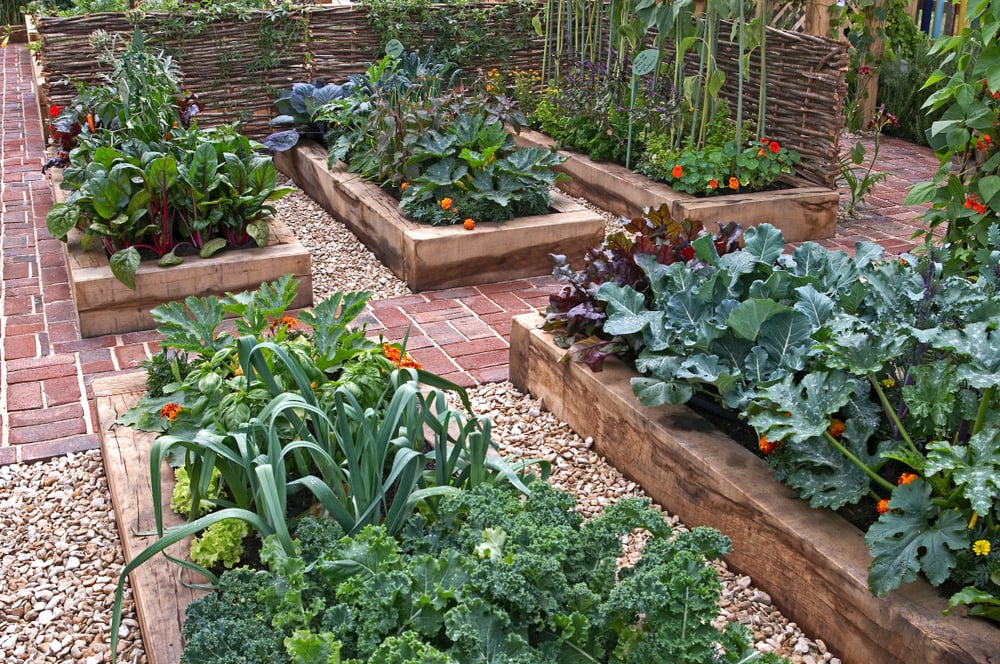

2 thoughts on “Raised Bed Garden Layout: Spacing, Height & Path Width”